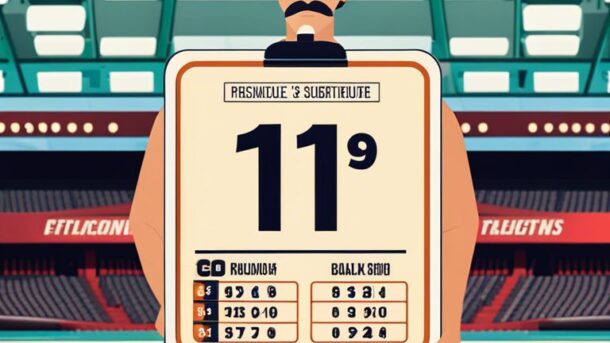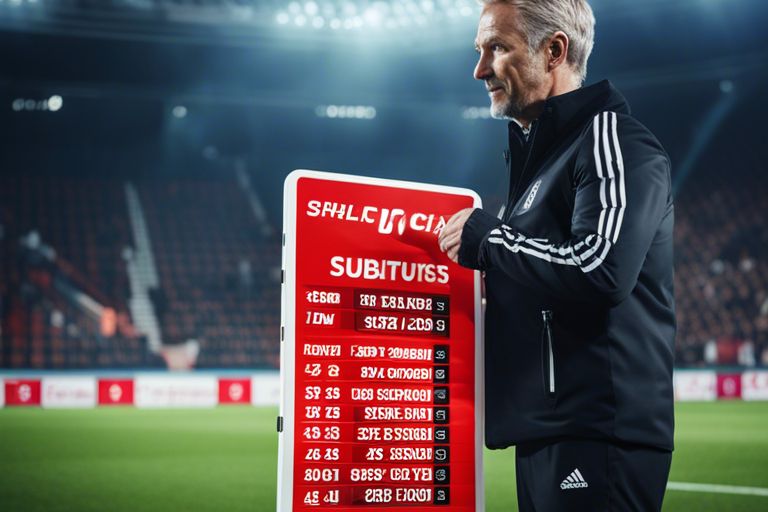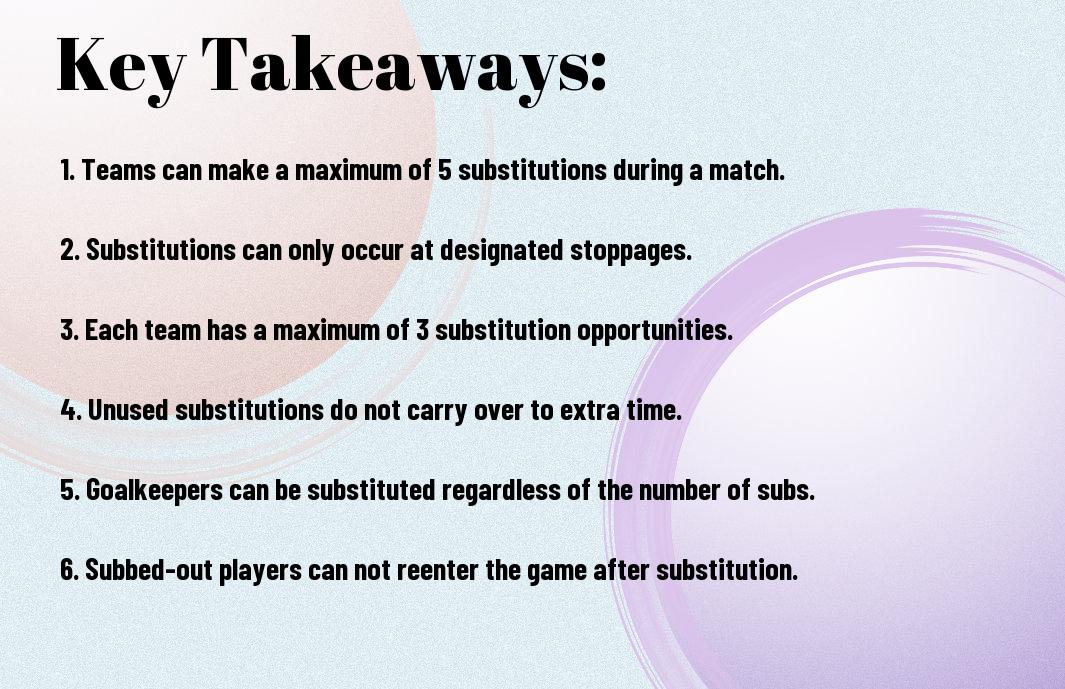Agility on the field is imperative for any soccer player looking to enhance their performance. Developing speed and agility allows you to maneuver around opponents, create scoring opportunities, and improve your overall game. In this post, you’ll learn effective strategies and exercises to boost your quickness and athleticism. For additional information on exercises tailored to soccer, check out What are the best exercises for improving speed and agility … Get ready to elevate your skills and dominate the pitch!
Key Takeaways:
- Drills: Incorporate a variety of speed and agility drills, such as cone sprints, ladder drills, and shuttle runs, to improve footwork and quickness.
- Strength Training: Focus on building core strength and lower body power through exercises like squats and lunges to enhance overall performance.
- Footwork: Practice specific footwork techniques that can help in quick direction changes, enhancing your ability to evade defenders and react swiftly.
- Endurance: Develop aerobic capacity through interval training to maintain speed and agility throughout the match without fatigue.
- Game Simulation: Engage in small-sided games to mimic match conditions, allowing you to apply speed and agility skills in realistic scenarios.
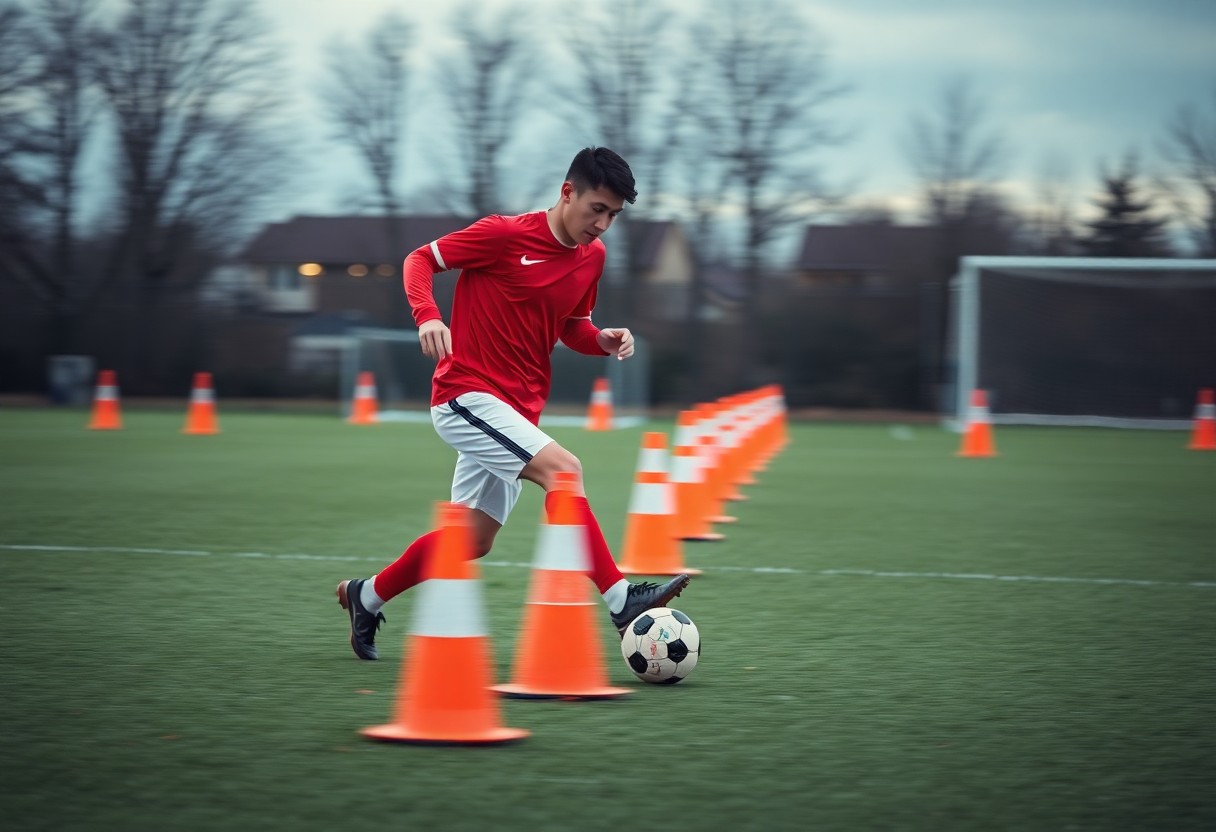
Understanding Speed and Agility in Soccer
While speed and agility are often viewed as separate attributes, in soccer they work hand in hand to enhance your performance on the field. Speed refers to your quickness in moving from one point to another, while agility is your ability to change direction rapidly and effectively. Together, these physical skills enable you to outmaneuver opponents, make swift plays, and ultimately excel in various game situations.
Definition of Speed and Agility
Soccer performance relies heavily on speed, which is the rate at which you can run or sprint, and agility, the skill of being able to pivot and change direction swiftly. These two components are crucial for navigating the dynamic and fast-paced nature of the game, allowing you to perform at your optimal level.
Importance in Soccer Performance
Clearly, improving your speed and agility directly impacts your overall soccer performance. The ability to accelerate quickly allows you to create space, while agility helps you evade defenders with ease. When you enhance these skills, you not only increase your effectiveness on the pitch but also gain a competitive edge over your opponents.
Importance of speed and agility extends beyond mere physical capabilities; they are key determinants of your game intelligence and strategic execution. Enhanced speed allows you to respond rapidly to game dynamics, whether it’s sprinting to intercept a pass or rushing to support a teammate in attack. Agility equips you with the necessary tools to maneuver around defenders and exploit gaps in the opposition’s formation. By focusing on these attributes, you’re investing in your ability to read the game better and make impactful decisions that can lead your team to victory.
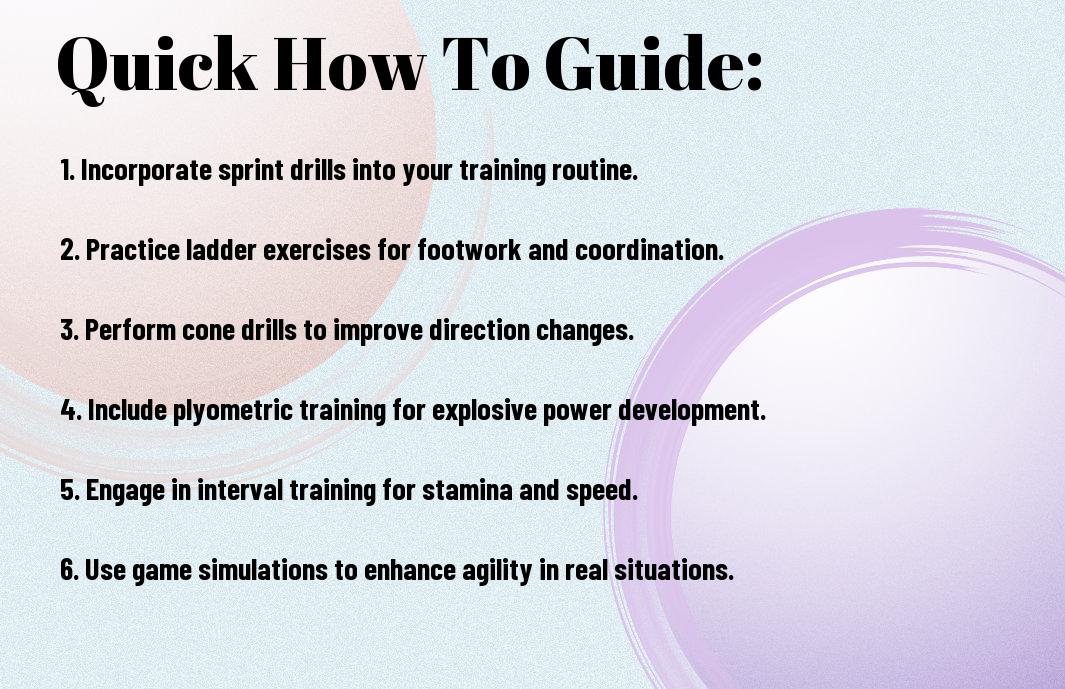
Key Factors Influencing Speed and Agility
Assuming you want to enhance your speed and agility in soccer, several factors play a significant role in achieving optimal performance:
- Physical conditioning
- Technical skills
- Body mechanics
- Nutrition
- Mindset and motivation
Recognizing these factors will help you create a well-rounded training program aimed at improving your on-field performance.
Physical Conditioning
Influencing your overall performance in soccer, physical conditioning encompasses strength, endurance, flexibility, and cardiovascular fitness. A well-conditioned athlete is better equipped to sustain high intensity throughout the game, allowing for quicker bursts of speed and improved agility on the field.
Technical Skills
Assuming you have a solid foundation in soccer basics, developing your technical skills is vital for enhancing your speed and agility. Mastering dribbling, passing, and shooting techniques will help you maneuver swiftly and effectively during gameplay.
Another key aspect of technical skills is your ability to change direction rapidly while maintaining control of the ball. This involves practicing drills that simulate game situations, allowing you to refine your footwork and decision-making under pressure. Ensuring that you blend technical proficiency with speed and agility will elevate your overall soccer skills.
How to Develop Speed
For aspiring soccer players, developing speed is imperative for gaining an edge on the field. Speed not only enhances your performance but also allows you to maneuver effectively, outrun opponents, and create scoring opportunities. Incorporate specific training regimens focused on sprinting and muscle strength to achieve noticeable improvements. Establishing a strong foundation for speed will significantly benefit your overall game.
Sprinting Drills
You can enhance your speed through various sprinting drills that focus on acceleration and top speed. Incorporate training such as interval sprints, hill sprints, and shuttle runs into your routine. These drills will help improve your explosive power and cardiovascular endurance, contributing to a more dynamic playing style on the field.
Strength Training
Sprinting plays a significant role in your capacity to develop explosive power which directly affects your speed. Focusing on lower body strength and core stability will help optimize your sprinting mechanics. Exercises like squats, deadlifts, and lunges can build the necessary muscle strength for faster sprints, while agility drills simultaneously enhance your quickness on the field.
Strength training is imperative for building the muscle groups required for explosive speed. Incorporate compound movements that target your quads, hamstrings, and glutes to build strength and endurance. Additionally, combining resistance training with plyometric exercises such as box jumps and bounds can help you develop the fast-twitch muscle fibers that contribute to powerful and rapid acceleration during soccer matches. Consistently integrating strength training into your regimen will lead to significant improvements in your overall speed and agility on the field.
How to Enhance Agility
Keep practicing and pushing your limits to improve your agility on the field. Incorporate various techniques that challenge your body’s ability to change direction quickly and maintain balance. Sprinting, lateral movements, and shuttle runs will help develop your response time, making you a more formidable player during critical moments of the game.
Agility Drills
Drills focused on agility can significantly enhance your overall performance. Set up cones or markers in various formations, and practice moving quickly around them, switching directions rapidly. Ladder drills, box jumps, and zigzag sprints are excellent for improving foot speed, coordination, and reaction time, translating directly to better ball control in matches.
Footwork Exercises
Agility in soccer heavily relies on your footwork. You can work on this by performing quick foot-speed drills, such as ladder drills, where you navigate through the squares to improve coordination. These exercises help develop muscle memory for action on the pitch, ensuring that your feet move quickly and efficiently as you navigate opponents and receive passes.
With consistent practice of footwork exercises, you’ll enhance your balance and coordination, allowing you to maneuver seamlessly during games. These exercises will not only improve your foot speed but will also train your brain to anticipate movements, creating a responsive play style that keeps you one step ahead of your opponents.
Tips for Training Effectively
To maximize your training sessions, focus on consistency and variation. Incorporate the following tips into your routine:
- Prioritize quality over quantity in your drills.
- Vary your workouts to avoid plateaus.
- Include sport-specific agility exercises.
- Warm up properly to prevent injuries.
- Rest adequately to allow your body to recover.
Assume that applying these tips will enhance your speed and agility in soccer.
Setting Goals
To keep your training focused and effective, set specific, measurable goals. Establish short-term and long-term objectives that challenge you yet remain achievable, such as improving your sprint time or mastering a new agility drill. Goals provide you with direction and motivation, keeping your training relevant and targeted toward your development in soccer.
Monitoring Progress
Little changes in your training can lead to significant improvements over time. Tracking your performance can help you stay accountable and motivated.
Training effectively involves regular assessment of your progress. Keep a journal where you log your workouts, times, and accomplishments. Use timing tools for sprints and agility drills to quantify your improvements. Adjust your training plan based on these insights to ensure you’re continually challenged and developing the necessary skills for quicker, more agile play on the field.
Common Mistakes to Avoid
After working diligently on your speed and agility, it’s important to recognize common mistakes that can hinder your progress. These errors typically stem from a lack of proper training techniques, overtraining, or neglecting vital recovery practices. By avoiding these pitfalls, you can maximize your potential and enhance your performance on the field.
Overtraining
Common signs of overtraining include persistent fatigue, decreased performance, and heightened risk of injury. While it’s tempting to push yourself to the limit, remember that your body needs time to recover and adapt to training stimuli. Neglecting this balance can lead to burnout and setbacks in your development.
Ignoring Recovery
An effective training regimen includes proper recovery to support your athletic progress. Skipping rest days or neglecting restorative practices can leave you fatigued and prone to injuries, ultimately stunting your growth as an athlete.
This includes not only taking time off from high-intensity training but also integrating practices like stretching, foam rolling, and hydration. Prioritizing sleep and nutrition is equally important, as these elements play a vital role in your overall recovery process. When you allow your body to recuperate, you’ll notice significant improvements in your speed and agility, ensuring you’re in prime condition when it matters most.
Final Words
Now that you know how to develop speed and agility in soccer, it’s time to put your knowledge into action. By incorporating targeted drills, strength training, and proper nutrition into your routine, you can enhance your performance on the field. Consistency is key, so commit to regular practice and track your progress. As you focus on improving your quickness and overall athleticism, you’ll see positive changes not only in your game but also in your confidence. Embrace the journey, and soon you’ll outperform your opponents with agility and speed.
Q: What are the best drills to improve speed and agility in soccer players?
A: To develop speed and agility, soccer players can incorporate a variety of drills into their training regimen. Suggested exercises include cone drills, which involve sprinting between cones placed at varying distances; ladder drills, where players enhance footwork and coordination by running through a ladder on the ground; and shuttle runs, which improve quick directional changes. Additionally, plyometric exercises, like box jumps and lateral hops, can build explosive power crucial for sprinting on the field.
Q: How important is proper warm-up and cool-down in speed and agility training?
A: A proper warm-up is crucial for preparing the muscles and joints for high-intensity training, minimizing the risk of injury. Dynamic stretches, such as leg swings and high knees, should be included in the warm-up routine. After training, a cool-down that incorporates static stretching can aid recovery and flexibility, ensuring that the muscles used during training are relaxed and lengthened, which contributes to better future performance.
Q: What role does strength training play in enhancing speed and agility for soccer?
A: Strength training is an integral component of developing speed and agility in soccer. Building strength in the lower body through exercises like squats and deadlifts contributes to greater power output, allowing players to sprint faster and change direction more effectively. Core strength is equally important, as it aids in balance and stability during rapid movements. A well-rounded strength training program should focus on both lower and upper body exercises to support overall athleticism on the pitch.
